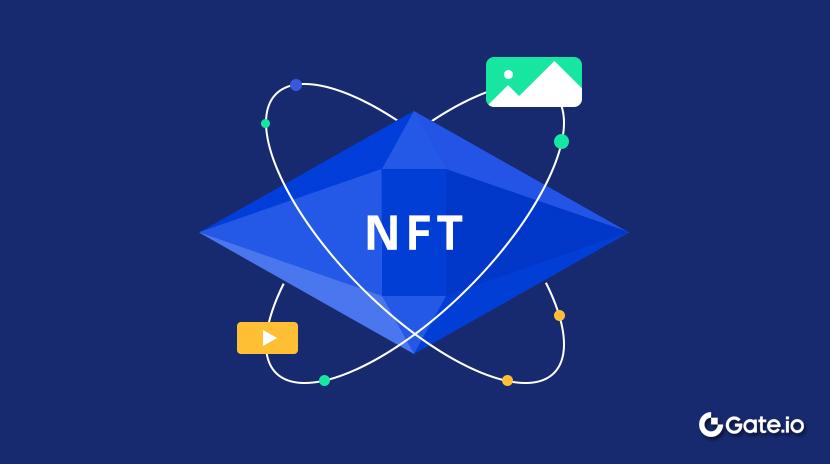nft

NFT (Non-Fungible Token) is a unique digital asset based on blockchain technology, where each token possesses a distinct identifier and non-interchangeable characteristics, fundamentally different from fungible tokens like Bitcoin. NFTs are created through smart contracts and recorded on the blockchain, ensuring that ownership, authenticity, and scarcity can be verified. Since the launch of CryptoPunks and CryptoKitties projects in 2017, NFTs have evolved from experimental concepts to significant applications across digital art, collectibles, gaming assets, and digital identity, providing creators with new channels for value creation and monetization while transforming perceptions and transactions of digital property rights.
Market Impact of NFT
NFTs have profoundly impacted the digital asset market, reshaping the creator economy and concepts of digital ownership:
-
Creator empowerment: NFTs break traditional intermediary models, allowing artists and creators to sell directly to their audience and earn royalties from secondary market transactions through smart contracts.
-
Value reassessment: NFTs provide clear scarcity and ownership proof for digital creations that were previously difficult to quantify in value, prompting market reevaluation of digital art and virtual assets.
-
Enhanced liquidity: Through NFT marketplace platforms (such as OpenSea, Rarible), digital assets can be traded more conveniently, increasing market liquidity and global participation.
-
Brand extension: Traditional brands and institutions (from sports leagues to luxury brands) have entered the digital collectibles space through NFTs, creating new fan engagement and revenue channels.
-
Cultural phenomenon: High-value NFT transactions (such as Beeple's "Everydays: The First 5000 Days" selling for $69.3 million) have sparked widespread discussion, transforming NFTs from a niche concept to a mainstream cultural phenomenon.
Risks and Challenges of NFT
Despite their enormous potential, NFT technology faces multiple challenges and risks:
-
Market volatility: The NFT market experiences extreme price fluctuations, widespread speculation, and lacks unified valuation standards, potentially leading to bubble formation and collapse.
-
Environmental controversies: Proof-of-work blockchains (like Ethereum 1.0) consume significant energy when minting and trading NFTs, raising environmental concerns.
-
Intellectual property issues: The boundaries between copyright of digital works and NFT ownership remain blurred, with unauthorized works frequently being minted as NFTs.
-
Permanence concerns: Most NFTs store links to content rather than the content itself, potentially resulting in asset loss if hosting services fail.
-
Regulatory uncertainty: Global regulatory attitudes and legal frameworks for NFTs remain unclear, involving regulatory risks across securities law, taxation, and anti-money laundering.
-
Technical barriers: Users need to understand complex concepts like crypto wallets and gas fees, limiting broader market adoption.
Future Outlook for NFT
The evolution of NFT technology will extend beyond the current digital art and collectibles market to broader application scenarios:
-
Utility NFTs: Transition from pure collectibles to assets with practical functions, including memberships, event tickets, in-game assets, enhancing user experience and utility.
-
Fractionalized ownership: By dividing high-value NFTs into multiple tradable units, participation barriers will be lowered, enabling broader asset liquidity and financial inclusion.
-
Cross-chain interoperability: NFT interoperability between different blockchain platforms will become a focus, reducing ecosystem silos and improving user experience and market efficiency.
-
Physical asset binding: NFTs will increasingly bind with real-world assets (such as real estate, luxury goods, identity credentials), forming bridges between the "metaverse" and physical world.
-
Social and community functions: NFTs will evolve into symbols of community membership and social capital, driving formation of new communities based on shared interests and ownership.
-
Infrastructure upgrades: Ethereum 2.0 and other upgrades will significantly reduce energy consumption and transaction costs, addressing environmental controversies and user experience issues.
NFT technology is expected to expand into more practical scenarios while addressing current challenges through technological improvements.
As a significant application of blockchain technology in the digital ownership domain, NFTs are fundamentally changing our understanding of digital asset value, scarcity, and authenticity. Although the market remains in early development stages, facing bubble risks, environmental controversies, and technical challenges, NFTs represent a new paradigm for the digital economy—an ecosystem that gives creators more control, provides consumers with true digital ownership, and breaks boundaries between physical and virtual worlds. As technology matures and application scenarios expand, NFTs have the potential to become key infrastructure connecting physical and digital worlds, rather than remaining limited to speculative digital collectibles.
Share
Related Articles

Top 10 NFT Data Platforms Overview

7 Analysis Tools for Understanding NFTs
